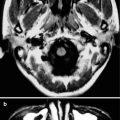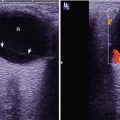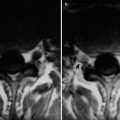(1)
Radiology Department Beijing You’an Hospital, Capital Medical University, Beijing, People’s Republic of China
Abstract
Assisted by surface receptors of susceptible cells, HIV can successfully get access to cells, including the first receptors and the second receptors. Firstly, envelope glycoprotein gp120 of HIV-1 binds to the first receptors, followed by its binding to the second receptors. Its structural changes cause its detachment from gp41, resulting in fusion of HIV and host cellular membrane and its successful access to host cells. Within 24–48 h after its access, HIV reaches the local lymph nodes. At d 5, HIV components can be detected in the peripheral blood. The attack of HIV causes viremia, leading to acute infection.
Keywords
Pathogenetic MechanismPathology of HIV/AIDSPathophysiology5.1 Pathogenetic Mechanism
5.1.1 Process of Virus Infection
5.1.1.1 Primary Infection
Assisted by surface receptors of susceptible cells, HIV can successfully get access to cells, including the first receptors and the second receptors. Firstly, envelope glycoprotein gp120 of HIV-1 binds to the first receptors, followed by its binding to the second receptors. Its structural changes cause its detachment from gp41, resulting in fusion of HIV and host cellular membrane and its successful access to host cells. Within 24–48 h after its access, HIV reaches the local lymph nodes. At d 5, HIV components can be detected in the peripheral blood. The attack of HIV causes viremia, leading to acute infection.
5.1.1.2 Process of HIV Infection in Human Cells
Attachment and Penetration
After successful access to human body, HIV selectively adheres to CD4 receptors of the target cells. Assisted by the facilitative receptors, it gains successful access to the host cells.
Cyclization and Integration
The virus RNA is transformed into cDNA, with contributions from reverse transcriptase, followed by its further transformation into double-stranded DNA with contributions from DNA polymerase. The newly-formed non-covalent-interacted double-stranded DNA integrates with chromosome DNA in host cells to form the viral double stranded DNA, also known as provirus.
Transcription and Translation
The provirus is then activated to transcribe itself with the virus DNA transcribed into RNA. Some RNAs are capped and tailed as the RNA of the filial generation genome. Some other RNAs are spliced as virus mRNA. It is then translated into structural and non-structural proteins of the virus on Palade’s granule. The synthesized virus protein is saccharified and processed in ribosomes of endoplasmic reticulum, followed by splitting contributed by protease to produce the protein and the enzyme of the filial generation virus.
Assemblage, Maturation and Pullulation
Gag protein and virus RNA are assembled into nucleocapsid. The virus envelope is obtained during the release of budding from serolemma. Thus a mature virus particle is formed.
5.1.1.3 Three Types of Clinical Outcomes After HIV Infection
Because the human immune system cannot eliminate all the virus, chronic infection occurs. Clinically, the infection has three types of clinical manifestations, typical progression, rapid progression and long term no progression. The factors influencing the progression of HIV infection include virus itself, host immunity and genetic background.
5.1.2 Anti-HIV Immune Responses
Anti-HIV immune responses include specific immune response and nonspecific immune response. Specific immune response more commonly occurs.
5.1.2.1 Specific Humoral Immunity
Within 2–12 weeks after access of HIV to human body, the human immune system produces various specific antibodies targeting HIV proteins. Only neutralizing antibody has antiviral effects.
5.1.2.2 Specific Cellular Immunity
The specific cellular immunity includes specific CD4 T lymphocytes responses and specific cytotoxic T lymphocytes responses. CD4 T lymphocytes, as the central cells in human immune system, play critical roles in specific immune responses. By secreting various cytokines, it induces B cell to produce anti-HIV antibody. By promoting the production and maturation of specific anti-HIV CD4 T lymphocytes, it activates macrophage and NK cells. CD8+ T lymphocytes, the effector cells of specific cellular immunity, inhibit the replication of HIV directly or indirectly via secretion of various cytokines, such as tumor necrosis factor and interferon.
Stay updated, free articles. Join our Telegram channel

Full access? Get Clinical Tree







